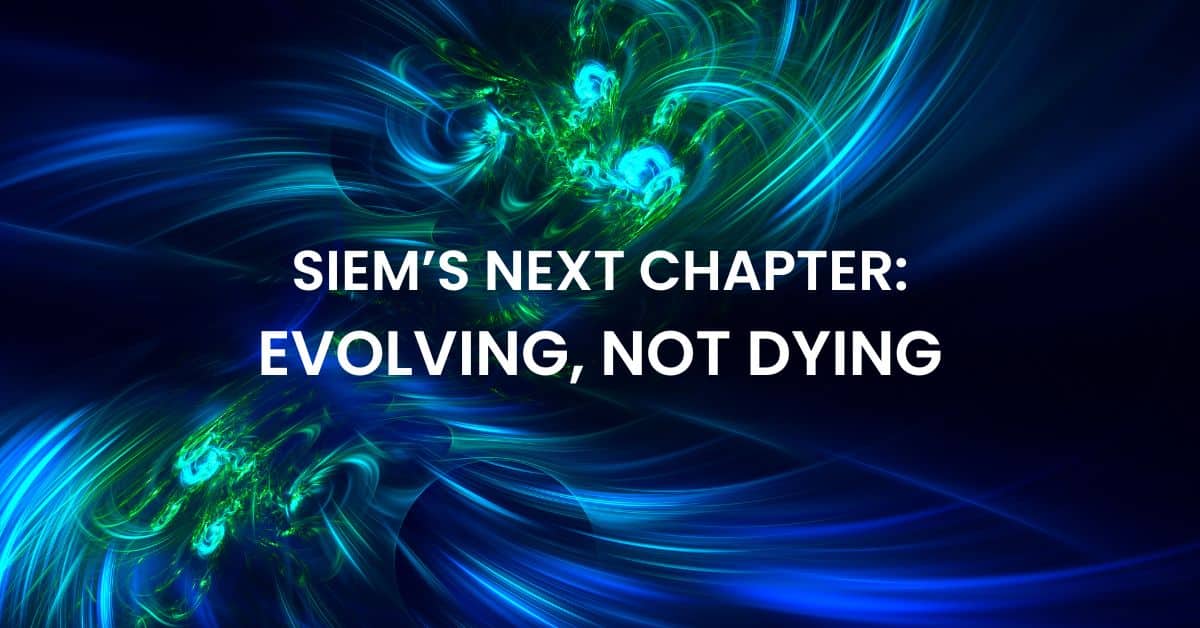The obituary for SIEM has been written more than once. The latest headline from Dark Reading calls it “dying a slow death.” Catchy. But wrong.
If you work in a SOC, you already know the need for centralized, contextualized visibility is not going anywhere. What is changing the future of SIEM, is how SIEM delivers it. If you are still thinking of SIEM as a clunky, high-cost log hoarder, you are stuck in the wrong decade.
We have moved from monolithic, “set it and forget it” deployments to lean, data-smart platforms that fit into broader detection and response strategies. AI is the newest shiny object. It is useful, but not a magic wand.
SIEM Is Not Dead — It’s Misunderstood
The core job of SIEM has not changed: bring together the right data, keep it long enough, and make it actionable fast. As Abe Abernethy, VP of Customer Enablement at Graylog, explains, the real issue is not death but evolution.
When SIEM fails, it is usually because organizations treat it as a one-click cure-all instead of aligning it with clear business risks and operational priorities. The SOCs that succeed are the ones that build their detection program around known risks and keep context front and center.
AI Will Not “Save” SIEM, but it Can Make it Smarter
There is a lot of noise about AI “rescuing” SIEM. The truth is that AI can accelerate investigations, prioritize threats, and help smaller teams do more. It cannot decide what matters to your business. Without clean data, solid tuning, and a clear risk management plan, you will just get wrong answers faster.
Abe puts it this way:
Used right, AI can focus analyst attention on the signals that matter to your business, not just the ones that are loudest in the data.
Complexity and False Positives Are Not Inevitable
The “SIEM is too complex” argument often skips over the fact that noise problems are usually self-inflicted. Poor log hygiene, inconsistent normalization, and no context enrichment will bury any SOC. With the right setup, you get fewer, higher-quality alerts that align with your risk profile.
As Abe notes:
Risk management is not just about reducing volume. It is about preserving the context needed to make confident, timely decisions.
Risk Management and Automation Go Hand in Hand
Automation delivers real value only when paired with a strong risk framework. Without clear definitions of what matters to the business, automation can move fast in the wrong direction. But when risk priorities are clearly defined and detections are tuned accordingly, automation amplifies human decision-making instead of replacing it.
Abe describes the danger of skipping the fundamentals:
The key is to let automation handle repeatable, low-risk tasks while analysts focus on the high-context investigations that can materially reduce risk to the organization.
The SOC Leader’s Takeaway
Take a moment to evaluate what’s really slowing your team down. Ask yourself:
- Can I keep years of data without breaking my budget?
- Am I getting context-rich alerts or just a higher volume of them?
- Can I onboard a new source in hours instead of months?
- Is my automation guided by a clear understanding of risk?
If the answer is “no,” the issue is the implementation, not the concept of SIEM.
How Graylog Fits The New Model
Data-first architecture – Intelligent Data Control keeps years of logs on the lowest-cost storage tiers with hot recall in seconds and no license tax.
Noise reduction by design – Entity-centric risk modeling and Illuminate content cut alert volumes while keeping fidelity high.
Human-in-the-loop automation – Guided workflows and AI assistance let lean teams make the calls.
Frictionless onboarding – New log sources searchable in under two hours, production-ready in a week.
SIEM is not on life support. It is evolving into something faster, leaner, and more risk-aware. The question is not whether SIEM will survive. The question is whether your SIEM strategy will.
One platform. Real threats. Less noise. Learn more about SIEM without compromise.


